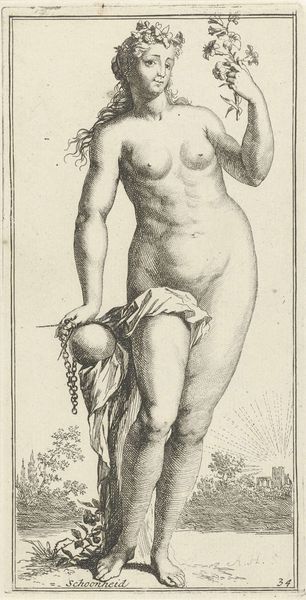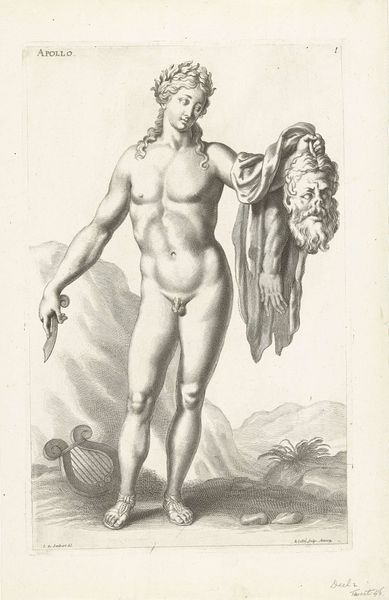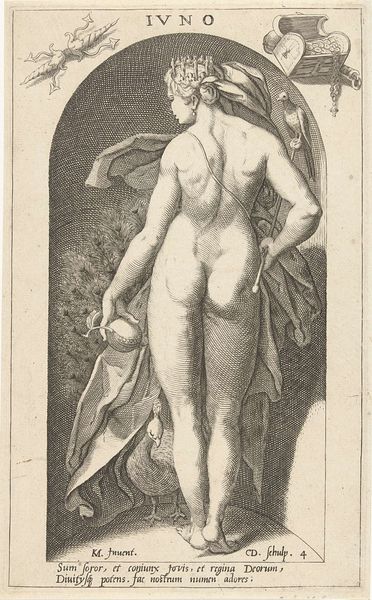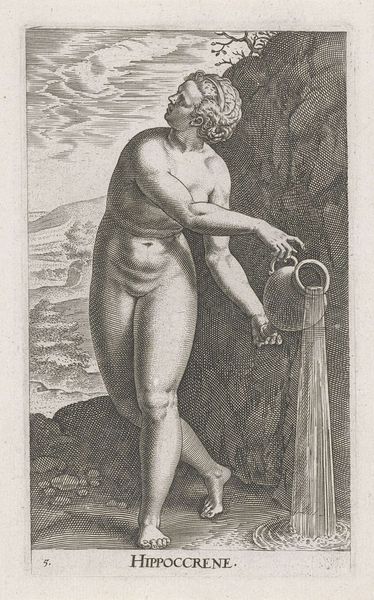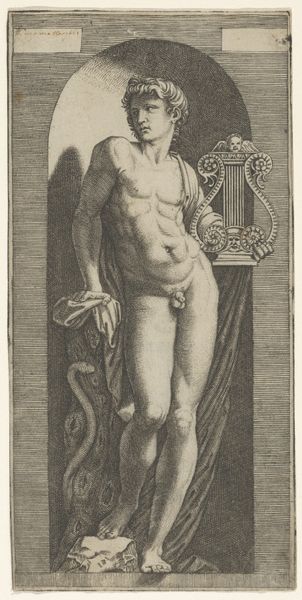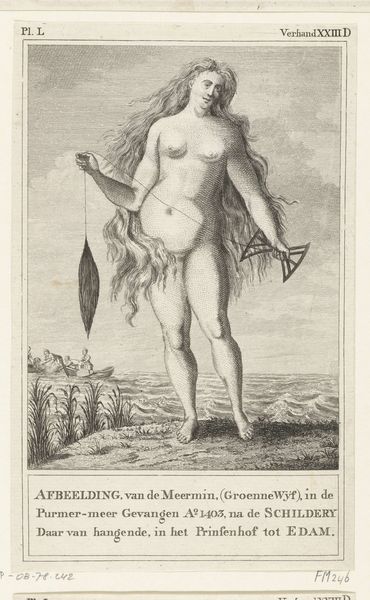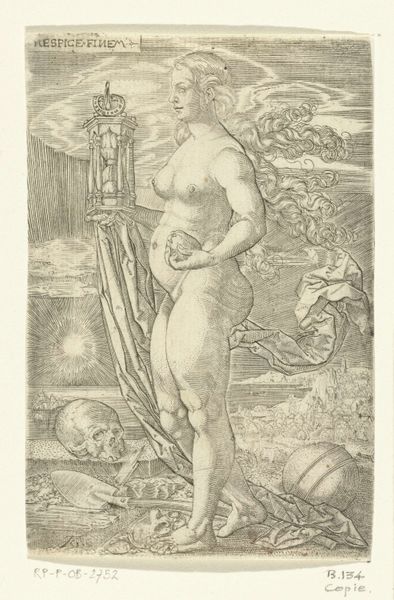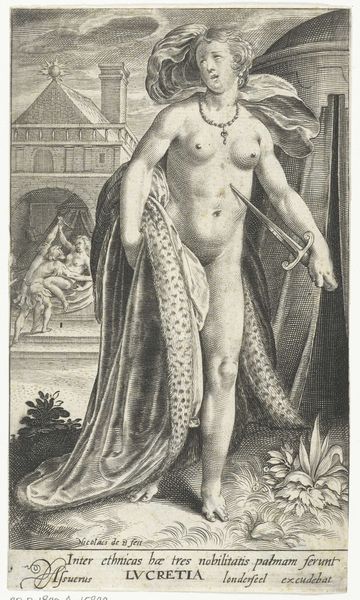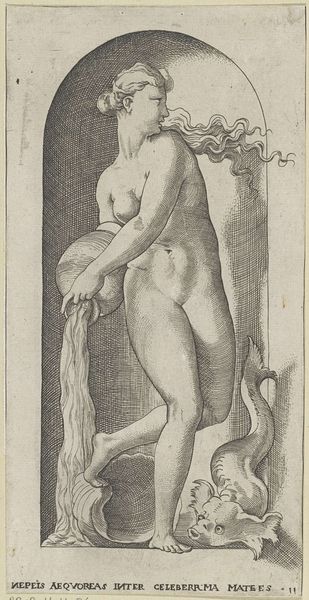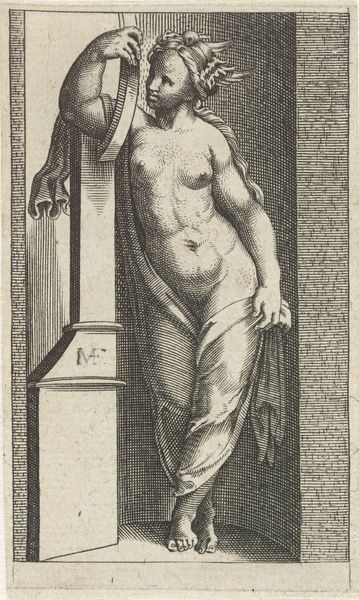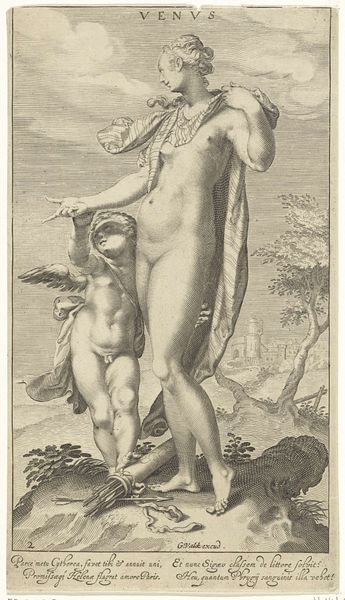
print, intaglio, engraving
#
facial expression drawing
#
allegory
#
baroque
# print
#
intaglio
#
old engraving style
#
figuration
#
portrait drawing
#
history-painting
#
nude
#
engraving
Dimensions: height 180 mm, width 90 mm
Copyright: Rijks Museum: Open Domain
Arnold Houbraken made this print called 'Gepersonifieerde Zonde' or 'Personified Sin', using etching in the Netherlands. The image shows a female nude, standing on a rock with a despondent look. We can see burning buildings and a figure with a bow and arrow in the background. The image creates meaning through the use of allegory, a popular device in the Dutch Golden Age. The Dutch Republic was a Calvinist society in the 17th century, and there was a constant concern about moral behavior. This print warns against the dangers of sin, using a female nude to represent temptation. Although the Dutch were very entrepreneurial, they were anxious about moral corruption due to wealth and worldliness. As historians, we can research the cultural and religious context of this artwork. By studying the visual codes and cultural references, we can better understand the role of art in shaping moral values. Art's meaning is always contingent on social and institutional context.
Comments
No comments
Be the first to comment and join the conversation on the ultimate creative platform.
